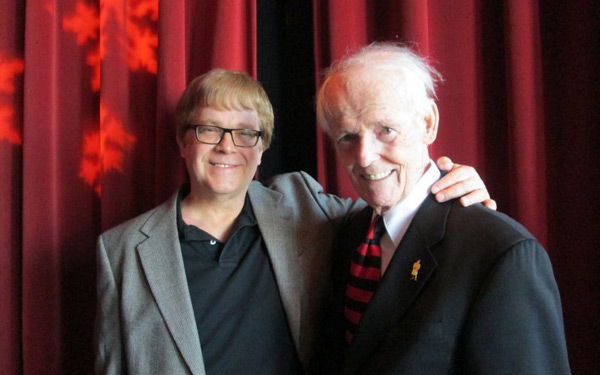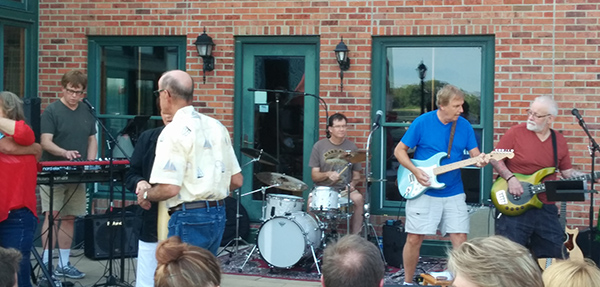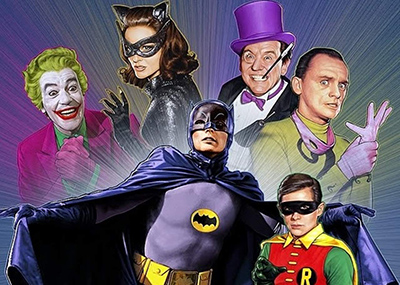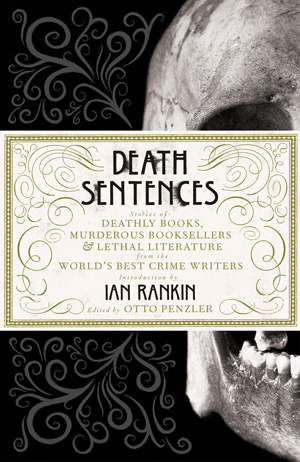The recent death of Jerry Lewis is a reminder that for Baby Boomers like me, our own mortality is continually underscored by the passing of the great media figures who shaped us.
Just as Jerry Lewis had a big impact on what I think is funny, Hugh Hefner – who recently passed away at 91 – was hugely important in my life. My uncle Richard had Playboys in his basement proto-man cave that I saw when I was as young as ten or eleven, learning well before puberty that I liked seeing pictures of beautiful naked women. When I was in junior high, my father received a Christmas present of a subscription to Playboy as a gag gift in a bridge club “Secret Santa” exchange. He had no interest in the magazine and soon forgot about the subscription, because I always got to the mailbox first.
I loved the magazine. I loved everything about it, including, yes, the articles. And the fiction, and the book and movie and record reviews. There was a sophistication an Iowa kid could only dream of. As a comics fan, I was bowled over by the incredible cartoons, not just their raciness but their artistry. And the incredibly beautiful photography of the centerfolds (this is circa 1964 – 1966) defined for me what a woman should look like. I should say “could look like,” because even then I knew this was an airbrushed fantasy. Still, I knew the names of every Playmate from the ‘60s through the mid-‘70s – the beautiful woman I married was completely unthreatened by the Playboy fantasy, and the magazines never had to be hidden around our home.
I came of age in the pre-hippie ‘60s. It was a world of the Rat Pack and sick humor and Beatniks and Ian Fleming’s James Bond and the early Beatles. I still prefer the early Beatles – you can have most of the White Album. But then the ‘70s came along, and magazines that were more frank about sex in prose and in photography – Penthouse, Hustler – began to make inroads for Hefner’s fabulous brainchild. (I write about this in the forthcoming Quarry’s Climax.)

Hefner was important in loosening up the sexual mores of this (and other) nations. For good or ill, he fired some of the first real volleys in the Sexual Revolution (the most important after Kinsey). But the later ‘60s and every decade that followed were problematic for him. He struggled with feminism and self-consciously wrote progressive essays that were very smart but pretty boring. He never found a way to square the circle of a woman having sexual freedom and full human rights. The female as sex object had been defined long before he came along, and he obviously made his fortune and fame expanding and redefining that image. But it limited him and made him seen a hypocrite.
I make no apologies for considering Playboy in its prime (and even for many years after) a great publication. Until the recent revamping (since abandoned) with nudity banished, a new issue always gave me a bit of a thrill reminiscent of getting to the mailbox before my parents noticed I had snagged Dad’s copy of Playboy. For many decades I subscribed, and I looked forward to no magazine more.
For the articles. And so much more.
I always felt Hef was a kind of nerd. He was a work-a-holic who loved publishing and awkwardly took on the sophisticated sybarite persona his magazine dictated. Oh, I realize he really did become a sophisticated sybarite, but when he appeared on TV, particularly on Playboy After Dark, he seemed so awkward and ill at ease.
Somehow that was his charm. It conveyed the possibility to nerds in Iowa and elsewhere that an Illinois nerd could be the man who lived in a mansion filled with beautiful models, movie stars, intellectuals, top nightclub talent, world-class chefs and a never-ending party. I much prefer the quiet life I’ve led with one beautiful woman, but fantasy is still fun to think about.
As some of you know, Hefner was Nate Heller’s friend and there are scenes at the Chicago Playboy mansion in the JFK Trilogy (Bye Bye, Baby, Target Lancer and Ask Not). So Nate tips his fedora to his old friend, while I just say, “Goodbye, Hef.”
Here’s a nice article on the Nolan series, marred a bit by the erroneous inclusion of the first name “Frank.”
Bookgasm has a nice review of the Bibliomysteries collection that includes the Hammer story “It’s in the Book.”
Gravetapping has a fine review of my pal Steve Mertz’s new novel.
Finally, here’s a brief review of Strip for Murder.
M.A.C.



